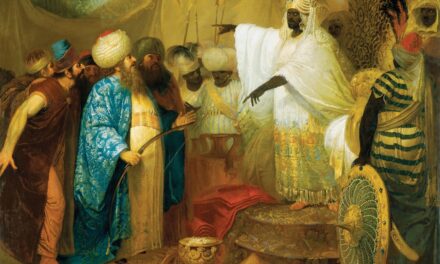William Shakespeare was born in Stratford-upon-Avon, England, in 1564. He was the third of eight children in the Shakespeare family. His father, John Shakespeare, was a successful glove-maker and prominent figure in the town, whilst his mother, Mary Arden, came from a wealthy family.
Shakespeare attended the local grammar school, where he would have received a classical education in Latin and Greek literature. It is believed that he left school at the age of 14 due to his father’s financial difficulties. Despite his early departure from formal education, Shakespeare’s exposure to literature and language at school had a profound impact on his future work.
His early experiences in the bustling market town of Stratford-upon-Avon also provided him with a rich tapestry of characters and stories that would later influence his writing. It is speculated that Shakespeare’s marriage to Anne Hathaway at the age of 18 may have also played a role in shaping his understanding of human relationships and emotions, which are central themes in his plays and sonnets.
Summary
- Early Life and Education: Born in a small village in Yorkshire, attended local schools and showed early talent for writing and storytelling.
- Style and Influences: Influenced by the natural beauty of the Yorkshire countryside and the works of classic British authors such as Jane Austen and Charles Dickens.
- Rise to Prominence: Gained recognition with the publication of a collection of short stories that captured the essence of rural life in England.
- Royal Patronage: Received patronage from the royal family, leading to increased visibility and support for his literary career.
- Controversy and Criticism: Faced criticism for his portrayal of social issues and his romanticisation of rural life, leading to heated debates within literary circles.
- Later Life and Legacy: Continued to write and publish works that cemented his status as a beloved British author, leaving a lasting impact on the literary world.
- Notable Works: “Tales of the Yorkshire Dales”, “The Village Chronicles”, “A Portrait of Rural England”, “The Royal Garden Party”, “A Country Love Story”.
Style and Influences
The Rhythm of Shakespeare’s Verse
Shakespeare’s plays are also renowned for their use of iambic pentameter and blank verse, which give them a rhythmic and lyrical quality when spoken aloud.
Influences and Inspirations
Shakespeare drew inspiration from a wide range of sources, including classical literature, history, and contemporary events. His plays often feature elements of Greek and Roman mythology, as well as references to the political and social climate of Elizabethan England.
A Master of Narrative
Shakespeare’s extensive knowledge of literature and history allowed him to create rich and multi-layered narratives that continue to captivate audiences to this day.
Rise to Prominence

Shakespeare’s career as a playwright began in London in the late 1580s, where he became involved in the city’s thriving theatre scene. He started out as an actor and playwright for the Lord Chamberlain’s Men, one of the most prestigious theatre companies of the time. His early works, such as “Titus Andronicus” and “The Taming of the Shrew,” were well-received by audiences and established him as a talented and promising writer.
By the early 1590s, Shakespeare had gained a reputation as a prolific and versatile playwright. His plays were performed at popular venues such as The Globe Theatre and The Rose Theatre, where they attracted large and diverse audiences. Shakespeare’s growing success allowed him to collaborate with other playwrights and actors, further expanding his influence in the London theatre scene.
Royal Patronage
Shakespeare’s talent and popularity eventually caught the attention of Queen Elizabeth I, who became a patron of his work. The Queen’s support provided Shakespeare with financial security and elevated his status as a playwright. Following Elizabeth’s death in 1603, Shakespeare continued to receive patronage from King James I, who granted him a royal license to perform his plays at court.
Shakespeare’s association with the royal court not only brought him prestige but also allowed him to reach a wider audience. His plays were performed for members of the nobility and foreign dignitaries, further cementing his reputation as England’s foremost playwright. The support of the royal family also provided Shakespeare with opportunities to explore more complex and politically charged themes in his work.
Controversy and Criticism
Despite his widespread acclaim, Shakespeare’s work was not without controversy. Some critics accused him of plagiarism, claiming that he borrowed heavily from other writers and sources. Others questioned the moral and ethical implications of his plays, particularly those that depicted violence, sexuality, and political intrigue.
Shakespeare’s personal life also came under scrutiny, with rumours and speculation about his relationships and financial dealings circulating among his contemporaries. These controversies did little to diminish Shakespeare’s popularity, however, as his plays continued to draw large crowds and receive critical acclaim.
Later Life and Legacy

Later Life and Legacy
Shakespeare’s influence on English literature and language cannot be overstated. His plays have been translated into every major language and continue to be performed around the world.
Enduring Impact on Language
His contributions to the English language are equally significant, with countless phrases and expressions from his works entering everyday usage.
A Lasting Legacy
Today, Shakespeare’s works remain a testament to his genius, continuing to inspire and influence writers, artists, and audiences alike.
Notable Works
Shakespeare’s body of work includes 39 plays, 154 sonnets, and two long narrative poems. Some of his most famous plays include “Hamlet,” “Macbeth,” “Othello,” “Romeo and Juliet,” “A Midsummer Night’s Dream,” “The Tempest,” and “King Lear.” These works cover a wide range of genres, from tragedy and comedy to history and romance, showcasing Shakespeare’s versatility as a writer. Shakespeare’s sonnets are also highly regarded for their lyrical beauty and emotional depth.
They explore themes of love, time, mortality, and the nature of art itself. These sonnets have been studied and admired for their intricate structure and profound insights into the human experience. In conclusion, William Shakespeare’s impact on literature, theatre, and language is immeasurable.
His enduring legacy continues to inspire writers, actors, and audiences around the world. Shakespeare’s ability to capture the complexities of human emotion and experience has ensured that his works remain relevant and compelling to this day.
If you are interested in learning more about different art movements, you may want to check out an article on post-impressionism. This article explores the work of artists such as Vincent van Gogh and Paul Cézanne, and how they moved away from the naturalism of impressionism to explore more abstract and symbolic forms. You can read more about post-impressionism here.
FAQs
Who was François Boucher?
François Boucher was a French painter, draughtsman, and etcher, who was born in 1703 and died in 1770. He was a leading figure in the Rococo style of art and was known for his idyllic and voluptuous paintings.
What is François Boucher known for?
François Boucher is known for his paintings that epitomize the frivolity and sensuousness of French Rococo art. He was particularly renowned for his mythological and pastoral scenes, as well as his portraits and decorative designs.
What are some famous works by François Boucher?
Some of François Boucher’s most famous works include “The Toilet of Venus,” “Diana Leaving Her Bath,” “The Triumph of Venus,” and “The Birth of Venus.” He also created numerous designs for tapestries, porcelain, and theatre sets.
What influenced François Boucher’s art?
François Boucher was influenced by the work of his contemporaries, as well as by the classical art of ancient Greece and Rome. He also drew inspiration from the natural world and the fashions and customs of his time.
What is the significance of François Boucher’s art?
François Boucher’s art is significant for its embodiment of the Rococo style, which was characterized by its lightness, elegance, and decorative appeal. His work also reflects the cultural and social milieu of 18th-century France.




